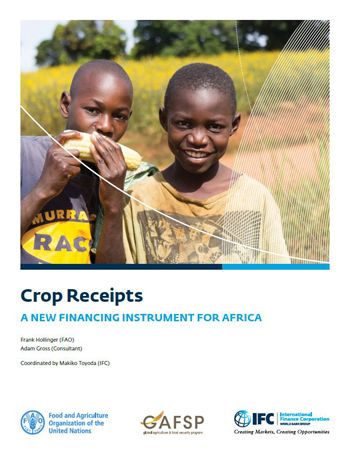In Africa, more than any other sector, agriculture has the potential to drive economic growth and reduce poverty. Agriculture accounts for nearly half of the continent’s GDP, and employs 60 percent of the labor force. The World Bank estimates that by 2030, agriculture and agribusiness together could develop into a $1 trillion market in Sub- Saharan Africa, up from $313 million in 2010. In sub- Saharan Africa (“SSA” or “Africa”), the population remains predominantly rural, and agriculture continues to be the main source of employment and income. However, access to finance remains a key bottleneck for most African farmers and agribusiness. Agricultural finance in SSA is therefore a high priority for IFC. Building on the successful track record of its post-harvest finance under the Global Warehouse Finance Program (GWFP), which was launched in 2010 and has made over $700 million of investment, IFC intends to look for ways to expand pre-harvest finance in Africa by introducing Crop Receipts (CRs), an innovative financing instrument developed in Brazil during the 1990s.
IFC and FAO have partnered to assess the scope for introducing CR-based pre-harvest finance in Africa and identify concrete opportunities and entry points in two African countries. While the primary objective is to guide IFC in developing ACRI, the study’s findings and recommendations could be of interest to a broader set of stakeholders in agricultural finance and development.
Contents
- Chapter 1
provides details on the background and purpose of the study - Chapter 2
analyzes the international experiences with CRs - Chapter 3
discusses generic entry points for CRs in Africa - Chapters 4 and 5
present specific opportunities for CRs in Zambia and Uganda - Chapter 6
presents the study’s main findings and offers recommendations
